Adhesive sealant: pros and cons
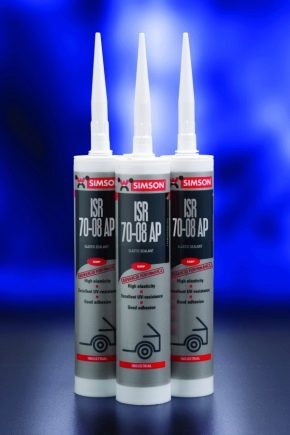
Every time, starting a renovation, many are faced with the problem of choosing high-quality finishing materials. When the plastic windows are inserted, and the tiles in the bathroom are laid, the question arises of how to protect the result from destruction and give it an aesthetic look. Glue-sealant comes to the rescue - a universal tool for applying to seams and joints between various surfaces. Such glue will protect both from the cold and from the fungus, if you choose it correctly.
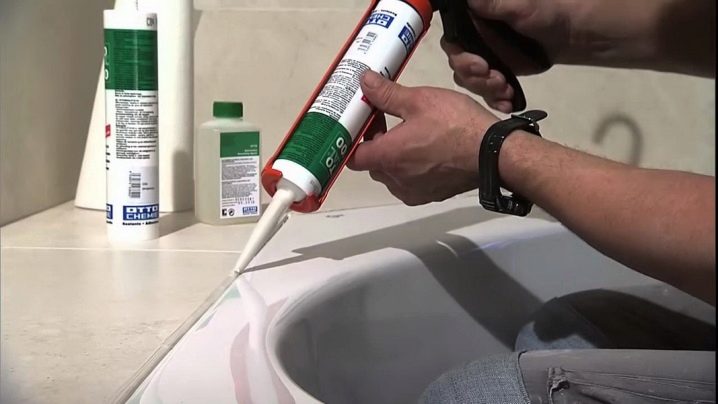
Peculiarities
Adhesive sealant is a mixture consisting of a set of polymeric materials with various organic and artificial additives. The scope of its purpose depends on the main element that is part of the tool.
A sealant must have a number of beneficial properties.
- The ability to adhere, that is, good adhesion to other surfaces, so that the edges do not lag anywhere, the surface with the glue does not swell and does not go bumps. The more surfaces that can be treated with the same type of sealant, the more versatile it is considered, and, accordingly, the more expensive it costs.
- Resisting the development of mold fungi, which is especially important for the joints between tiles in the bathroom, where, due to poor-quality sealant, sometimes all repairs have to be redone.
- Resistance to the formation of cracks in the seam and their destruction, because glue is not a consumable that needs to be changed every year. Ideally, the sealant should withstand both mechanical shock and internal tremors and vibrations for years. If even a small crack has formed in the hermetically sealed seam, it immediately begins to let through both heat and moisture.
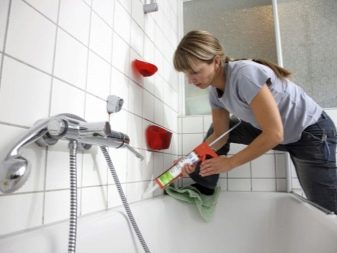
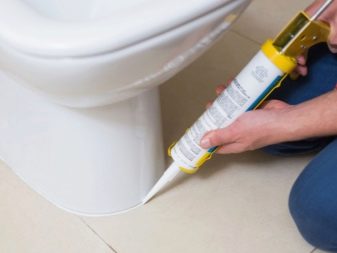
- The ability to easily tolerate changes in the environment, such as sudden changes in temperature, increased exposure to moisture, dust or ultraviolet radiation. Many types of sealants are used for outdoor objects, so it is important that they do not crumble after the first rain.
- Resistance when interacting with aggressive chemical elements such as gasoline or alkali is also very important, even if we are not talking about industrial facilities. For example, you can only glue the door rubber bands on your car so that they last at least a year, you can only use very high-quality material.
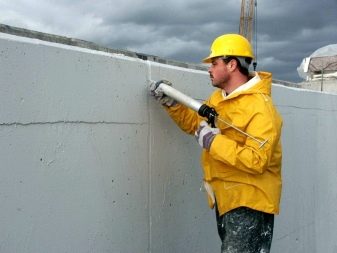
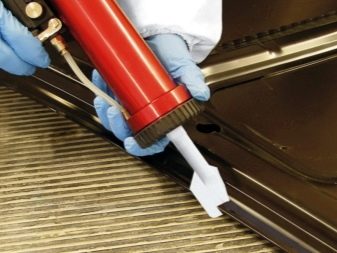
- Plasticity and viscosity also play a big role in choosing the right adhesive sealant, because it should smoothly fit into the gap and seam of any shape and depth, evenly distributed over the surface.
- The speed of drying and hardening, because the faster these processes occur, the safer the repair algorithm. This characteristic of sealants is especially important when repairing in an open area, when the glue that cures for a long time will simply creep out from bad weather. In some cases, the slow rate of hardening, on the contrary, can be salutary, especially when the seam is closed inaccurately from sudden movement or carelessness. Otherwise, the quickly hardened material will have to be cut off in the places where the excess is formed with a knife or the result should be left as it is.
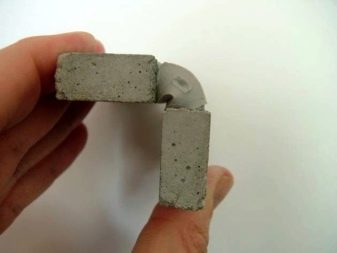
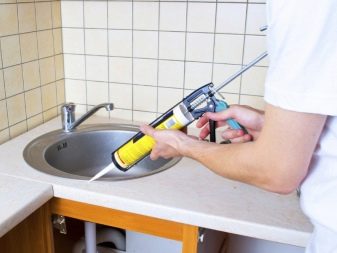
Views
Sealants have many classifications based on their chemical composition, properties and functionality.Before going to the store, it is better to familiarize yourself in advance with the main characteristics of the glue on the Internet and mark several specific modifications and manufacturers that are necessary for this particular type of work, for example, decide whether you need a sanitary sealant or a universal one. For each type of gluing, there are many identical names, and the box with the sealant is very small, and detailed instructions for use do not always fit there.
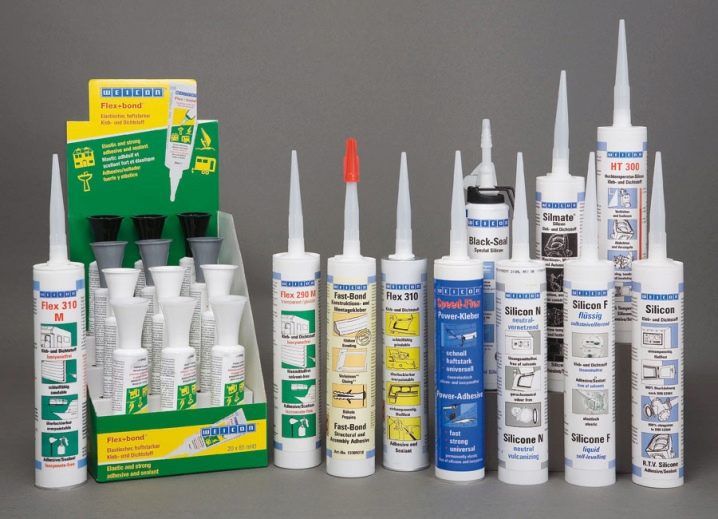
Depending on the complexity of its polymer composition, there are several types of glue.
- One-component sealants sold as a ready-to-use mixture with one main active ingredient. Such a sealant does not require additional manipulations, it is already ready for work after opening the container and contact of the composition with air. It is worth remembering that as soon as the integrity of the packaging is broken, you must immediately start working, because soon the glue will harden, even if no one touched it.

- Two-component the glue comes complete with an activator (catalyst), which must be added after opening the package. Only then will the reaction begin and the composition will be ready for use. There are different types of glue additives, and if work is impossible without them, they are usually included in a set in a separate package. Most often, they can be purchased additionally if the substance was not enough to dilute the entire volume of glue or the coveted bag was lost.
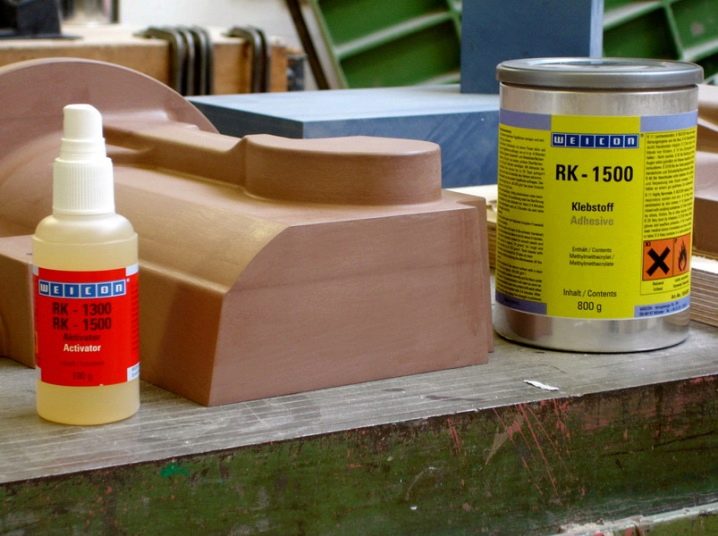
The main classification of sealants is considered to be separation based on the main active element in the mixture.
- Polyurethane sealant, which has a very high strength and durability, therefore it is often used in industry. But also for domestic purposes, it is suitable if you need to fasten and form gaskets, as well as seal the seams of the car. However, its increased adhesion to other materials also has a downside - in its properties it is similar to polyurethane glue, therefore it holds everything tightly, so such a sealant is not suitable for movable and collapsible parts of the mechanism.
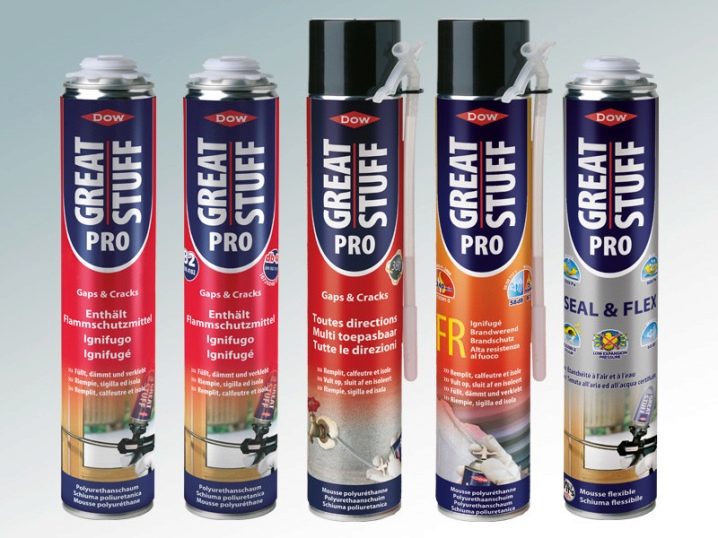
A seam made with a polyurethane sealant is not afraid of moisture or aggressive sun, so the glue is often used for outdoor work, especially when repairing the roof of buildings. Also, polyurethane sealant actively resists the effects of strong chemicals, so when repairing a car after applying it, you can treat everything from above with a protective or anti-corrosion coating. With excellent elasticity and resistance to deformation, this glue is also good for repairing building facades.
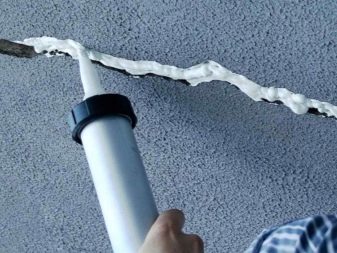

The main disadvantage of polyurethane compounds is their high toxicity and an unpleasant pungent odor during operation, which is why such a sealant is not suitable for indoor use. Yes, and on the street with him, you must definitely follow all the safety rules, and glue the parts in a protective suit and mask.
- Anaerobic sealant - a strong enough agent used for sealing seams and creating gaskets in threaded sections of both pipes and various mechanisms, for example, flanges. The peculiarity of anaerobic compounds is that they solidify, in fact, without contact with air, but through polymerization in contact with metal. This drying method ensures maximum bond durability and strength.
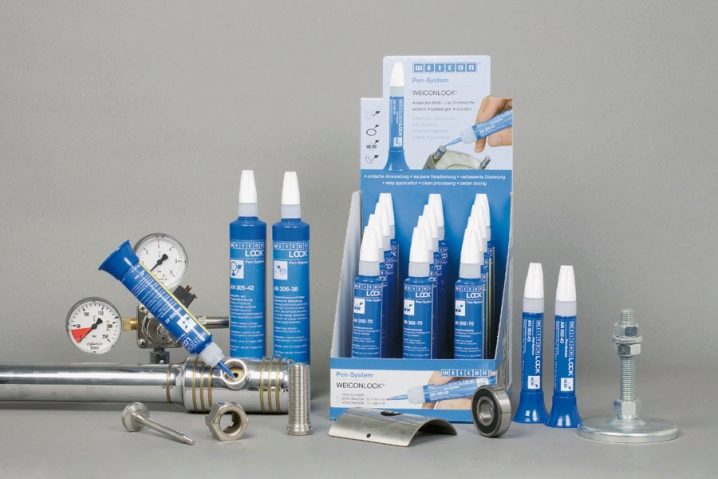
Before buying such a sealant, you must clearly understand for which elements it will be used, because depending on this, you will need a tool of varying degrees of strength. So, an anaerobic adhesive sealant with a low degree of strength should be used for joints that are in constant motion, exposed to heavy loads or frequent dismantling.
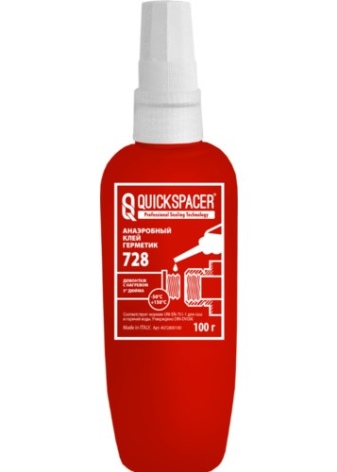

Medium strength adhesive is needed for joints that are rarely dismantled and are mostly at rest, for example, car parts.The strongest sealant should only be used for fixed parts and threaded connections, since it is almost impossible to separate them later.
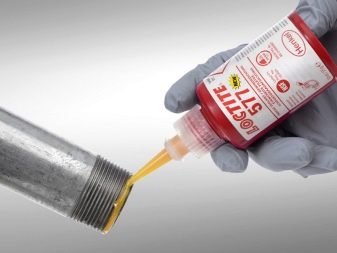

Among the obvious advantages of anaerobic sealants, one can single out resistance to high temperatures or heat resistance, up to 100-150 ° С for an average glue in this line and up to 175 ° С in certain items. Among other things, this sealant is resistant to complex chemicals such as gasoline, engine oil or ethylene glycol. Due to this factor, anaerobic substances are used in the repair of both cars and, for example, a home diesel generator set or boiler room.
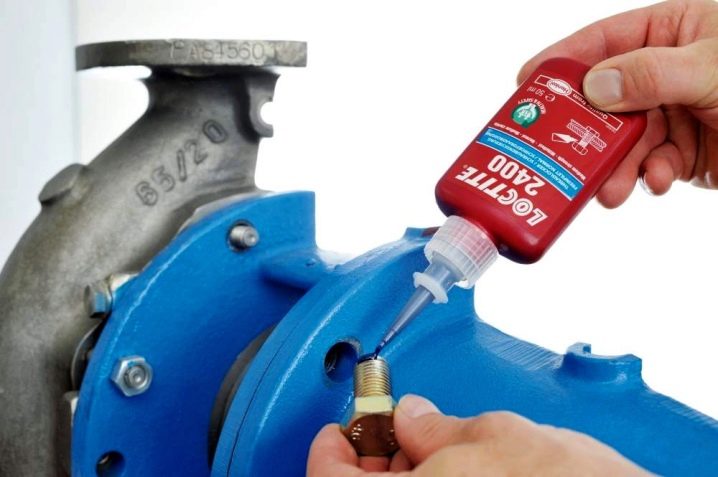
Anaerobic sealant is very economical in consumption, but it is still worth buying it with a minimum stock. It adheres well to the surface only if it is evenly distributed over the entire seam area. If the pipes are being repaired from the inside, it is not immediately clear how much sealant is needed to seal the seam. If the gap is not completely filled or the sealant is applied in several stages, it will harden unevenly. In such a situation, it is not necessary to count on the durability of the connection, since the seam can crumble under the influence of vibrations.
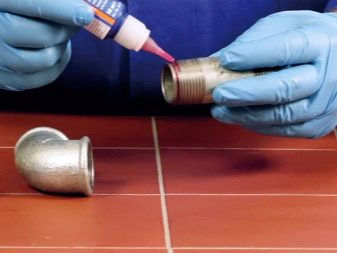
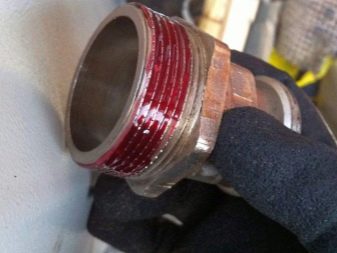
The high degree of adhesion of anaerobic sealant to a metal surface also has a downside - when dismantling or replacing connections, you sometimes have to use special tools to separate the elements from each other. In some cases, it is even necessary to heat the gluing site to an ultra-high temperature so that it disintegrates, which is not always possible in domestic conditions. Another feature of anaerobics is compatibility only with substances similar in composition, which are not always similar even within the line of the same, at first glance, sealants. When buying an additional can of such a composition, it is better to know exactly what exactly the seam was glued to before, and choose an anaerobic composition that is as similar as possible to the previous one.

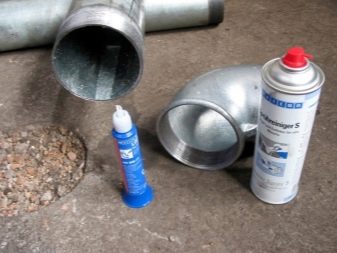
- Acrylic sealant very popular for interior work, especially finishing and decorative. It is the safest, most environmentally friendly, quick-drying, and practically odorless. The area of its application is extremely narrow - acrylic is unstable against low temperatures, collapses from deformations and vibrations under pressure, and low elasticity does not allow them to stick together moving parts of mechanisms. Such a sealant is good for use in a warm building, while the humidity should not be too high.

Despite the fact that all acrylic is made on a water basis, sealants are also classified here as waterproof and non-waterproof. Ordinary acrylic glue dissolves with water, it can be tinted in any desired color with the same acrylic paint, if the basic white or transparent modification is not satisfied. From temperature extremes or contact with moisture, it can crack within a few days after application, but for a plastic and, most importantly, dry surface, it is perfect and will last a long time.
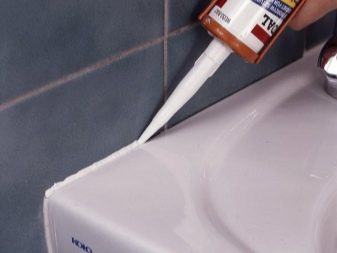
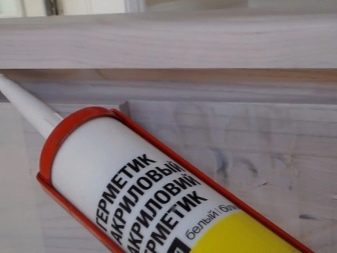
Waterproof acrylic sealant can no longer be called absolutely harmless to people, but the possibilities of its use are much wider. It has good adhesion, that is, it can be combined with many surfaces, even uneven ones and with previous paint layers. You can also glue the seams with them even in the bathroom, because waterproof acrylic normally reacts to the periodic ingress of moisture on the surface of the seam. You should not nevertheless use it in places of constant interaction with water such as pools, no acrylic will withstand such loads.

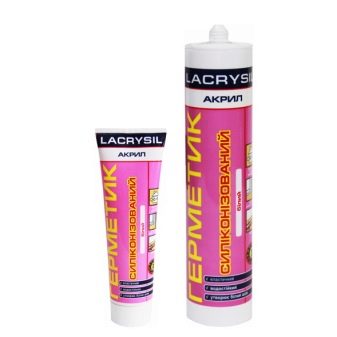
Another type of acrylic sealant is a latex adhesive. Having high elasticity and not amenable to deformation, it is often used for installation work in the repair of doors and window openings.Of the advantages of such a sealant, one can note the ability to paint the resulting seams not only with acrylic paint, but also with ordinary oil paint.
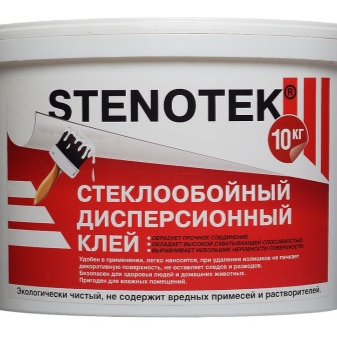
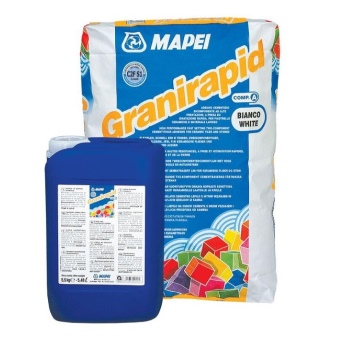
- Bituminous sealant very popular since ancient times, due to its simplicity in operation, increased strength and quick adhesion. In addition to natural bitumen and rubber components, it contains polymer additives, thanks to which this sealant is applicable for almost any type of repair. Most often it is used when repairing slate or tiled roofs, as well as foundations and foundations of a fence. Bituminous material is also good for carrying out communications and gluing joints in downpipes.
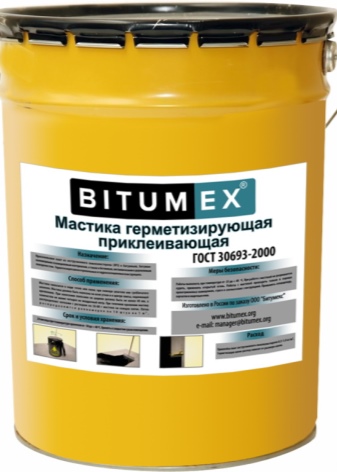
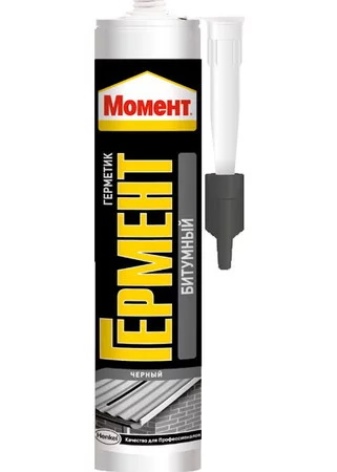
Basically, bitumen is a derivative of petroleum products and looks like black tar or liquid rubber. This structure has very good viscosity and flow properties, so the sealant evenly applies to the most difficult and uneven surfaces. On its packages it is often written that bitumen is applied to any, even uncleaned surface. This only applies to situations when particles of dust or small construction debris remain on the items to be sealed. If the surface is not cleaned of previous paint and varnish layers, then adhesion will not happen, and the entire effect will disappear in a month.
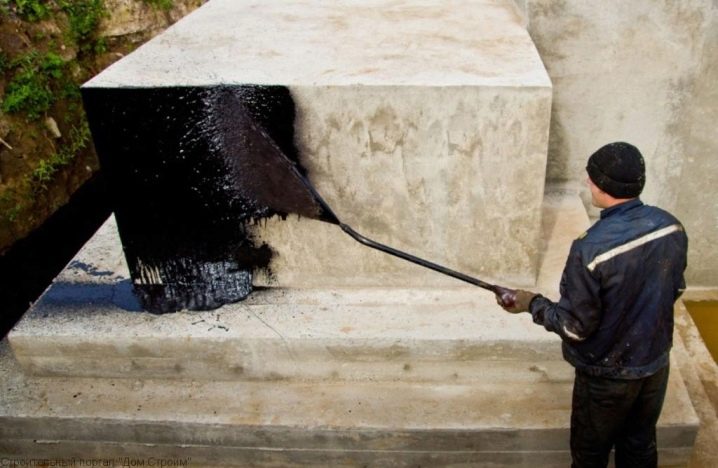
The natural origin of bitumen resin also determines its excellent hydrophobic properties, therefore, such a sealant is often used not only for fastening seams, but also as a waterproofing agent. They are very fond of using such material in the country or in the village for waterproofing barrels for rainwater or sewer pipes in private houses. Bitumen is good not only because it is waterproof, but also because of its ability to prevent the formation of mold and mildew.

The addition of polymers to the composition has expanded the scope of application of the bitumen sealant, since it has become more frost-resistant and therefore suitable for outdoor work. Also, the seams glued with bituminous fillers do not sag or crack when they dry. If we take into account the rather low price of this sealant in comparison with the same silicone or acrylic, then you can get an excellent price-quality ratio with sufficient durability of the material.
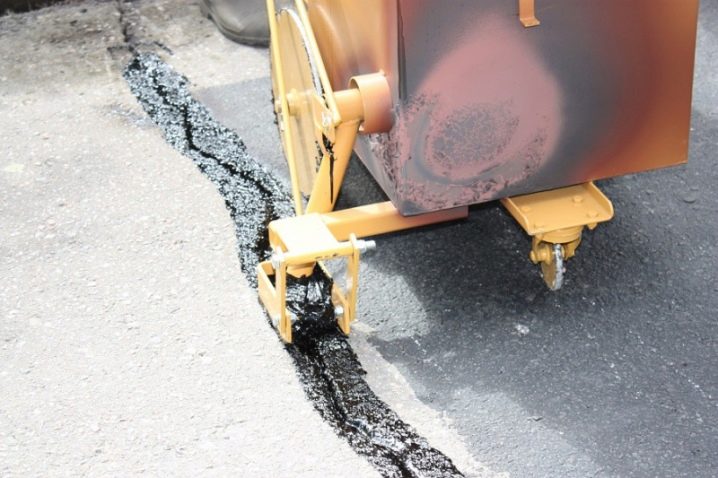
Despite its good resistance to aggressive environmental influences and temperature extremes, bituminous sealant still should not be used in the construction of chimneys, boiler rooms or saunas. Yes, he calmly reacts to the effects of ultraviolet radiation, so nothing will happen to him in the heat outside. However, with a sharp increase in temperature above 50 ° C, it can slightly melt and return to its original state of aggregation as a liquid resin.
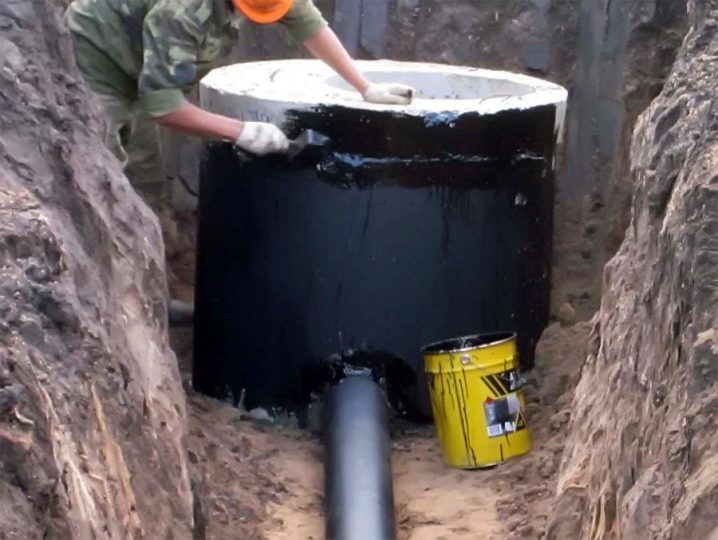
At low temperatures, you can work with bitumen without fear, but then its ability to withstand strong vibrations is lost, which is especially important when sealing foundations. For this type of repair work, it is better to choose a rubber sealant, which has approximately the same set of qualities as bitumen, but at the same time retains resistance to the effects of tremors at a sufficiently large temperature range: from -50 ° C to about + 60 ° C.
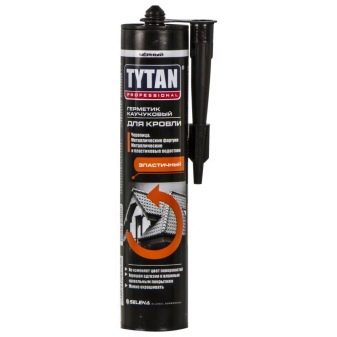
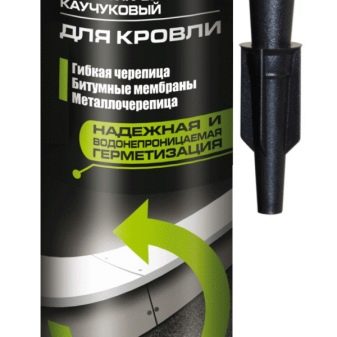
Another significant drawback of such a sealant is its black glossy shade, and it cannot be painted. This means that bitumen is not suitable for interior or decorative work if the owner is worried about the visual aesthetics of the seams. An exception is the situation according to which the black color of the interior, for example, in the bathroom, is the author's idea. Then the brilliant oil shade of bitumen, on the contrary, will organically merge with the environment.
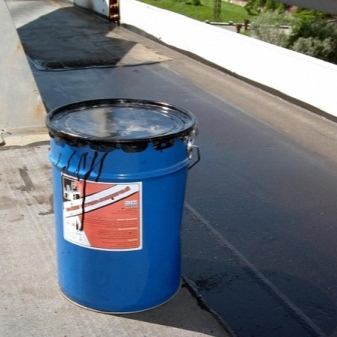
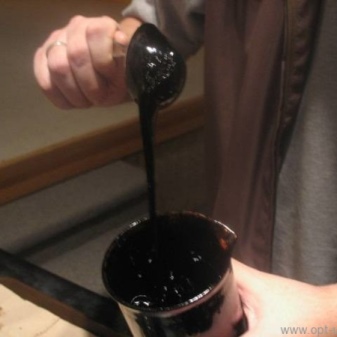
Bitumen is used for a reason, mainly for outdoor types of work: being quite toxic, it emits harmful substances when the can is uncorked, especially at low temperatures.Any retailer will recommend the selection of gloves and face shield for safe handling of this sealant. It would seem that natural bitumen itself, which is the basis of the composition, is a substance safe for humans, which does not carry toxins and carcinogens. The danger lies precisely in polymer additives, but thanks to them, the seam becomes so plastic after application.
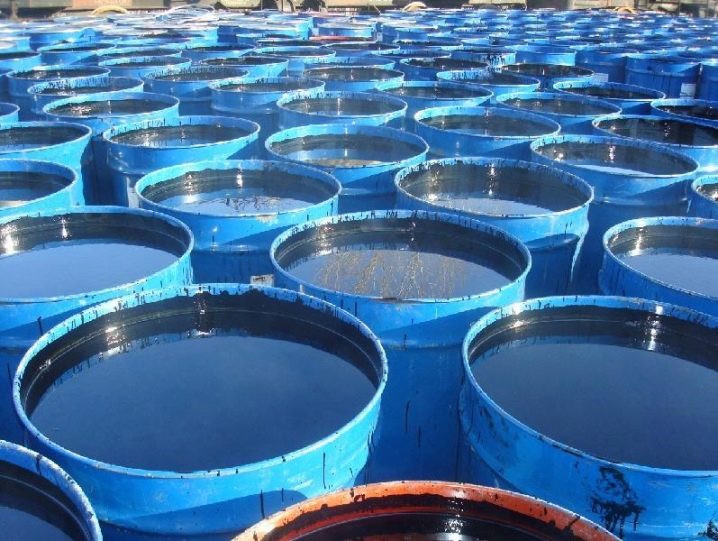
If the penetration of the sealant into the lungs is extremely undesirable, then in contact with the skin, you should not be afraid of burns. Of course, the bituminous composition cannot be washed off with plain water like acrylic. The sealant can be wiped off the hands with white spirit, and if it is not at hand, then with a regular nail polish remover, only preferably with an acetone content.
Bituminous material has good anti-corrosion properties, therefore it is the best option when installing metal support posts, as well as gluing joints in the roof. It is good to fit curtain rods, sheet profiles, fasteners such as an antenna holder on it. It is also excellent for sealing wooden poles and beams, as it prevents them from rotting from moisture, forming a protective film in the places where the seams are glued.

Bitumen is suitable not only for working on metal or wood, but also for such modern materials as aerated concrete or foam concrete, because it has a high degree of adhesion. In order for the sealant to fit better, the surface must first be primed, otherwise the bitumen may partially absorb into the base itself and no longer protect it so well from moisture penetration. It is also not recommended to spread it with a thick layer when you want to create the maximum effect of sealing and waterproofing.
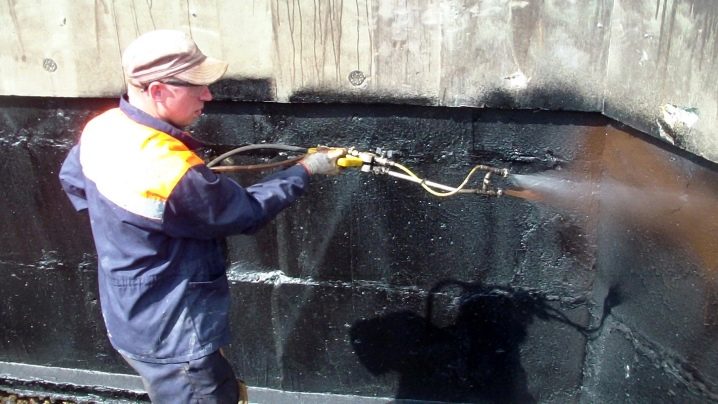
If the bituminous components do not dry out, then such a sealant will not hold for a long time. To enhance its protective properties, it is better to apply the material several times, giving each individual layer the maximum drying time. How much each layer should dry is indicated on the packaging of the particular sealant.
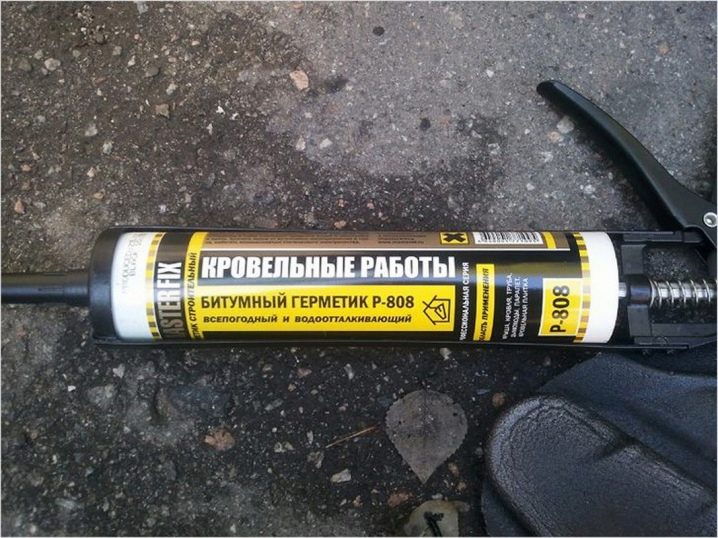
The resinous viscous structure of the sealant allows you to work with it even in the rain, that is why the craftsmen love to use it for work on the roof, which, due to its large area, is simply impossible to cover or glue in one day. Bitumen is suitable for metal tiles, plywood, and corrugated board. If a leak is detected just during the rain and this is the only way to understand exactly where it is flowing from, then an urgent repair in 20 minutes can provide just this material.
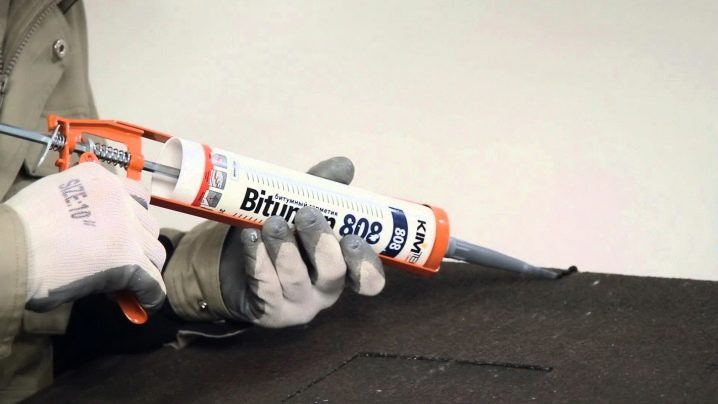
Bituminous sealant is sold in two main packages - a narrow tube or a metal can. The first option is more often used for small repairs and gluing narrow seams. It is most convenient to transfer the contents of the tube to an air gun for more accurate application.
Bulk sealant is used for large scale objects such as foundations. When carrying out this kind of work, it is necessary to purchase a spatula in order to level the layer of sealant applied to the surface with it, and also to remove the surplus that has not hardened to the end.
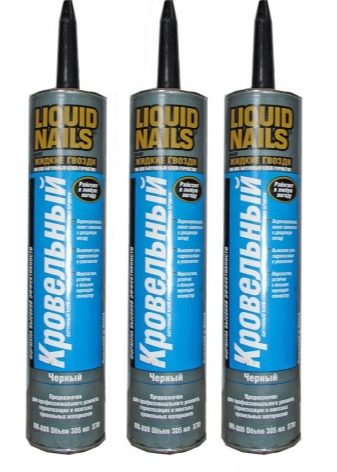

- The most versatile sealant is silicone. It is preferred by most craftsmen when repairing, despite the rather high price compared to analogues made of acrylic or polypropylene. They are trying to patch up not only cracks, joints and seams on various surfaces, but, above all, they are used when installing plastic windows or repairing cracks in old wooden frames.
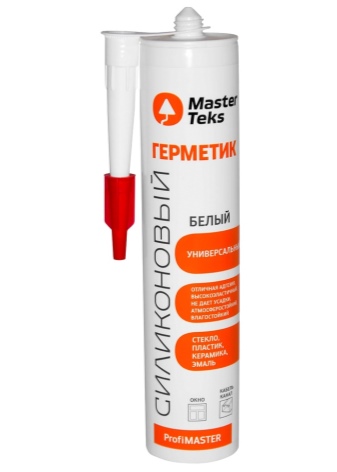
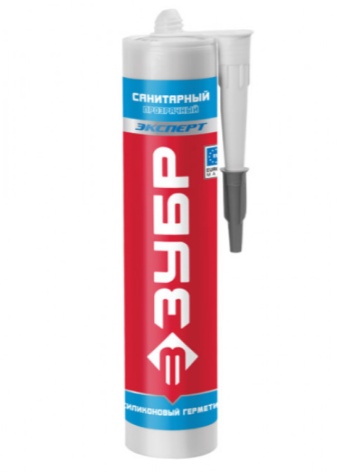
In terms of chemical composition, silicone sealant can be classified as a so-called composite compound, that is, multicomponent. The basis of the material is natural silicone rubber - in itself quite plastic, but at the same time strong material. Additional elasticity is obtained due to the inclusion of a silicone plasticizer. The strength of the sealant is given by polymer reinforcements, and the viscosity - by special couplings - by vulcanizers.For good compatibility with different surfaces, there is no need for preliminary treatment with a special primer or enhanced cleaning from previous layers, because the sealant already contains a bonding primer.
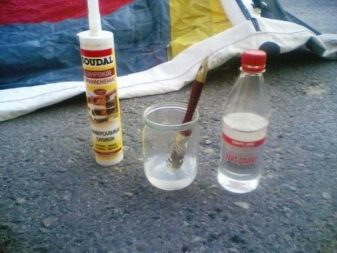
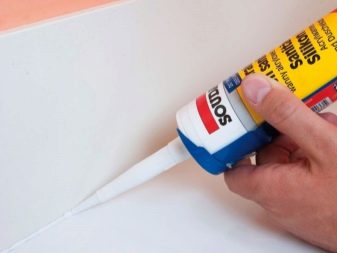
The undoubted convenience of silicone lies in the possibility of adding coloring fillers to the composition, so at the output we get both black and white, and any other colors. The same fillers contribute to the bulk of the foam, which fills every corner of a crack or seam more evenly. The complex composition of silicone sealant often includes additives based on mechanical particles of quartz chips or glass for better adhesion to the surface.
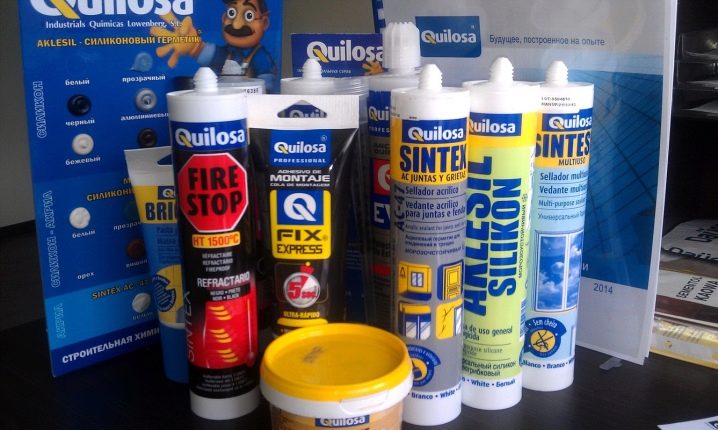
The main characteristic when choosing a silicone material is its moisture resistance. It is achieved due to the inclusion in the composition of special substances - fungicides, which not only prevent the development of mold, but even stop the growth of already formed fungi. That is why there is no better sealant for the bathroom, especially considering the expanding, but non-cracking silicone joints that occur when the temperature drops.

The silicone mass is extremely flexible and can stretch over an area many times the original coverage area without breaking the bond. Due to this, the sealant can withstand the temperature range from -60 ° C to + 230 ° C, and even higher in some markings. In addition to temperature extremes, the sealant resists well the aggressive effects of the environment, including various corrosive chemical elements. The big disadvantage of silicone is that it cannot safely contact gasoline and its derivatives, as well as antifreeze. This means that this sealant cannot be used to repair car parts that come into contact with engine fuel.
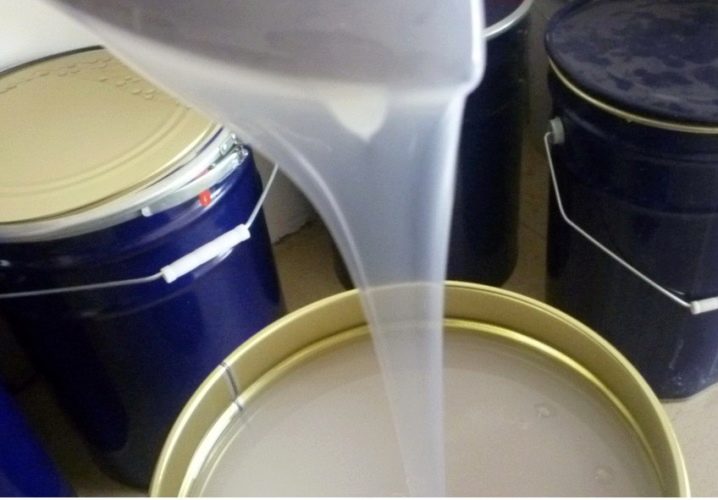
Of the advantages, it should be noted both the frost resistance of the silicone sealant and its safety under the influence of ultraviolet radiation. Therefore, it is suitable for outdoor work, because here you do not even need to wear a special mask in most cases. Even in winter, on the street, you can safely glue them cardboard, rubber and cork gaskets, as well as various parts of cars, including movable ones. When the sealant hardens, it becomes like rubber in a jelly-like state, so even after application, the parts to be glued can be moved in space and interchanged for some time.
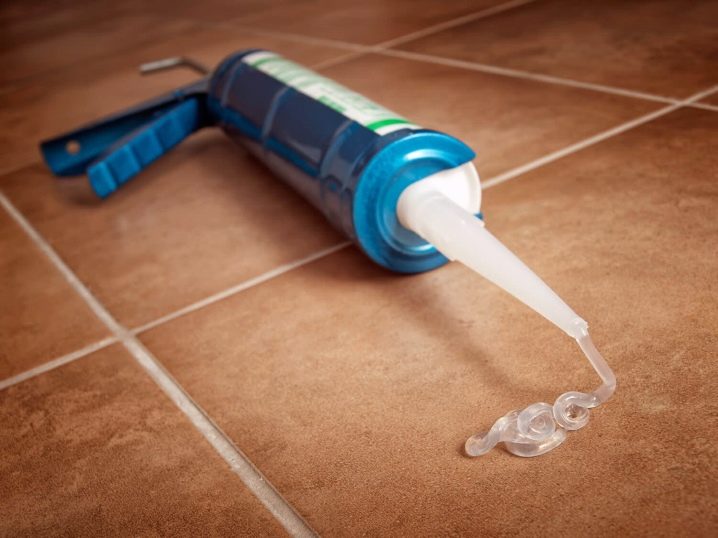
Aquarium silicone sealant is a separate category., which is used, however, not only for the repair of aquariums. It can also be used to treat bathrooms, showers, as well as various ceramic surfaces and glass containers. Such a sealant has a number of indisputable advantages, such as good adhesion to various surfaces, elasticity, and fast drying time. The main thing is that the seams treated with this sealant do not spread at elevated temperatures in the manner of liquid nails, but remain unchanged, only stretch.
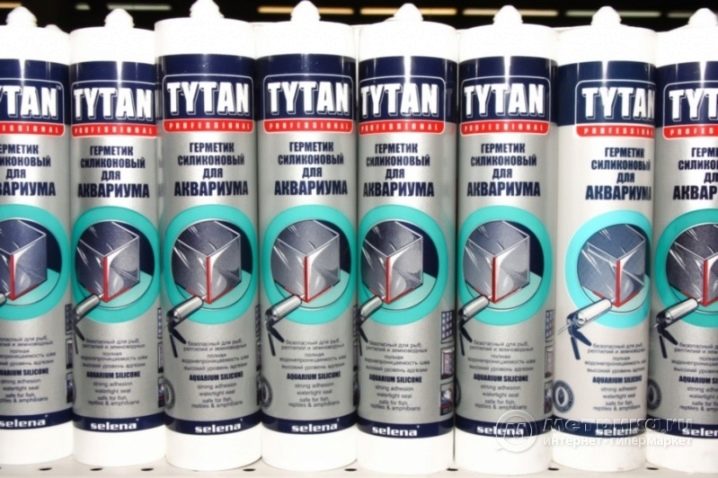
The most expensive among silicone sealants is considered to be heat-resistant. It is he who is chosen when repairing and sealing a chimney or heating pipe, as well as electrical wiring. The composition retains its elasticity and strength, regardless of the height of the temperature. If an ordinary silicone sealant is operated at a maximum of 250 ° C, then a heat-resistant one can withstand up to 350 ° C. There is a line of heat-resistant sealants with an additive based on copper, and they do not deform even at a temperature of 380 ° C.

Colors
During the repair, it is very important for the master that the joints and seams are not visually striking, do not draw attention to themselves. The ability to glue the surfaces at eye level with a sealant to match the base product is a very important thing. The most versatile is a transparent sealant, so it is most often used when repairing plumbing at joints.The colorless composition retains the same degree of water resistance as the painted versions, so it is applied even where water leaks and excessive mold formation are possible. A sealant is also very popular when grouting joints during the assembly of kitchen sets, because the color of natural wood or stone is extremely difficult to imitate with a monochromatic composition.
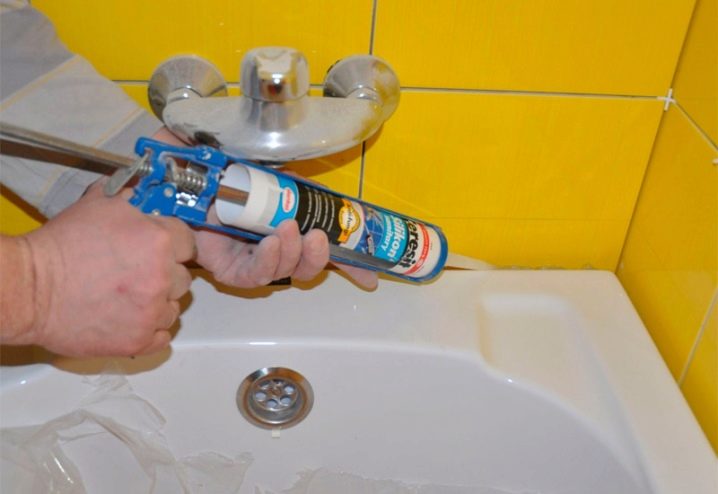
White sealant is the most common in any hardware store. Most often, white is the natural color of the composition, therefore, coloring additives are not mixed into it, which increase the final cost of the product. It is convenient for gluing seams of mostly white plumbing, between tiles in the bathroom, as well as the slopes of plastic windows.
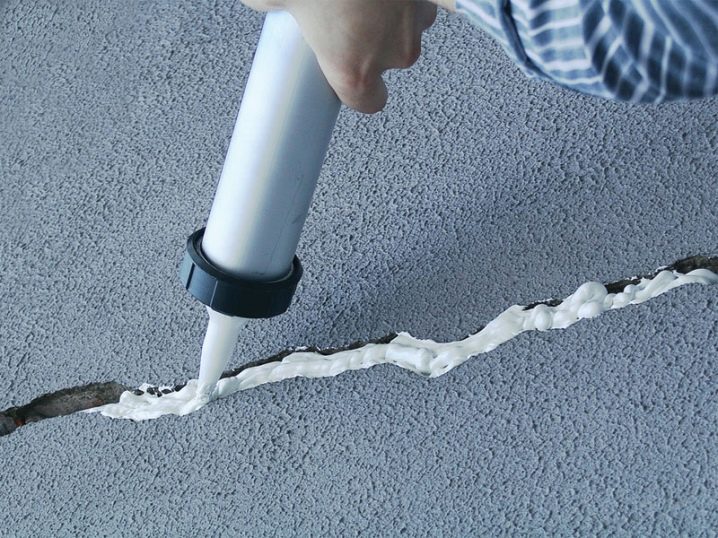
Black sealant, if it is of natural origin, is a rich color of oil with a glossy sheen. It is not suitable for many places, only for internal gluing of pipes or threaded mechanisms, as well as in places inaccessible to the daily gaze of a person. An exception is the deliberate use of black sealant as a decorative element inside art spaces and lofts, when they want to emphasize the texture of an uneven wall with a dark lining.
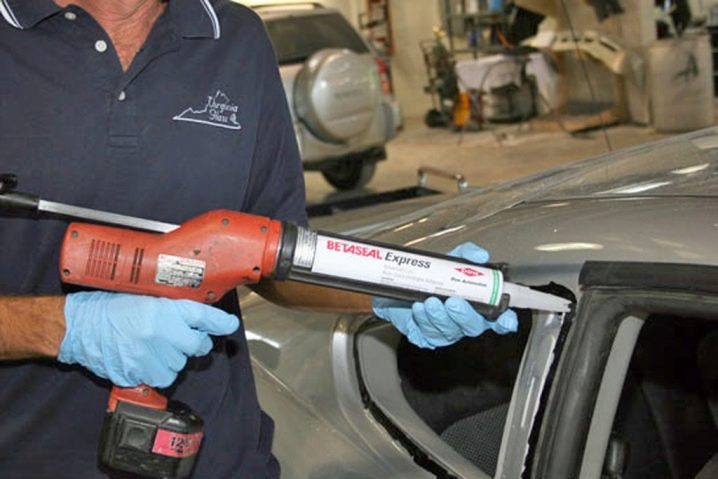
Sealants with colored pigments such as red, yellow or beige are not uncommon these days. They are more expensive than a white shade, but for the correct aesthetic perception of the repair, it is worth slightly overpaying, given the fact that silicone sealants, unlike acrylic, are almost impossible to paint with ordinary paint after hardening.
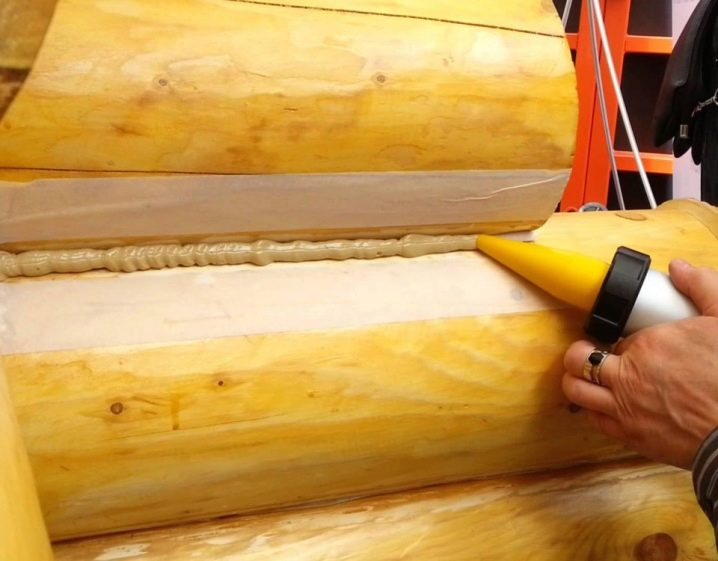
Scope of application
Sealants are used in almost any type of repair and finishing work. Due to their numerous advantages, such as resistance to temperature extremes, exposure to aggressive chemical elements, water and ultraviolet light, such compositions are used both for outdoor work and in harsh industrial conditions.
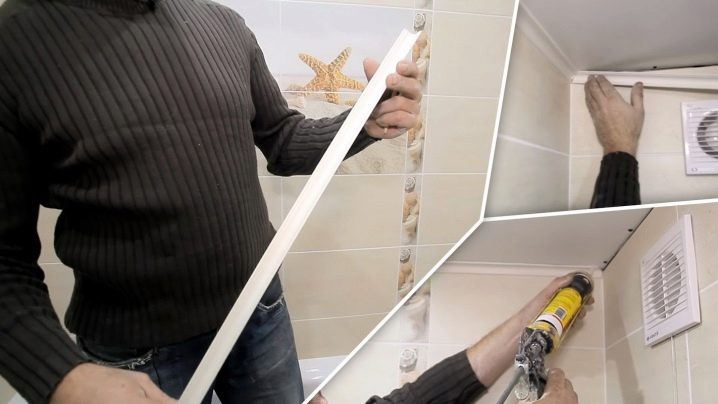
As for domestic use, most often sealants are indispensable when installing plumbing.as well as other equipment and decor items in the bathroom. Any other glue will be of little use here, since constant humidity and the formation of mold fungi do not allow non-sealing compounds to serve for a long time in such conditions and to fix all items reliably. It is good to seal the joints between the sink, bathtub, toilet bowl and walls with a white silicone sealant. A silicone or polyurethane compound is also perfect for gluing the gaskets at the drum of the washing machine. On especially durable types of sealant, you can completely plant a mirror in the bathroom like on liquid nails and not be afraid that it will move away from the wall from the high humidity in the room.
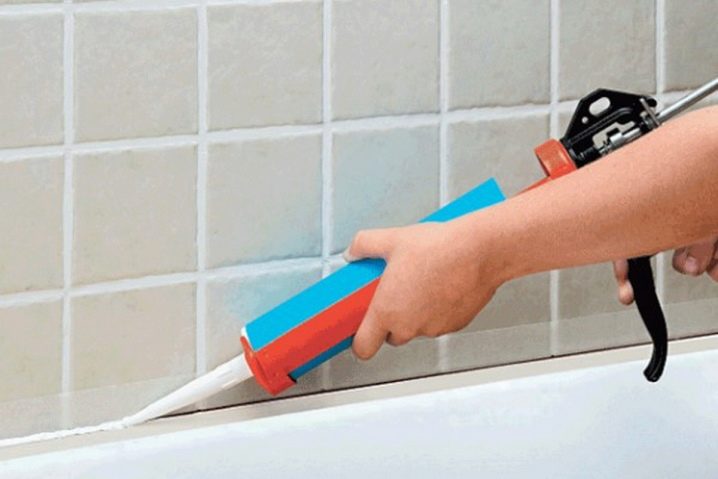
The sealing properties of bitumen glue are actively used in the processing of threaded connections in various mechanisms, as well as seams in drainpipes, even from the inside. It is also popular during renovation work on facades and roofs of buildings, during the renovation of PVC products and even vinyl siding. Reliable adhesion of parts located on the street and exposed to temperature fluctuations - all this is a bitumen sealant on the shoulder. And the elements of the tiles, through which water flows from the roof, and the steps peeling off at the threshold of the house, and tiles made of natural stone - everything is easily fixed with the above-mentioned composition.
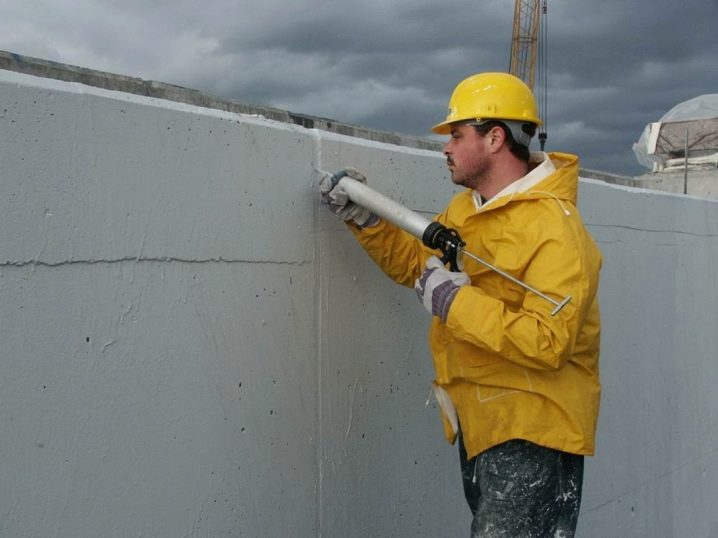
The most famous application of both silicone and acrylic sealants is the installation of plastic windows, as well as the gluing of gaskets on the closing mechanisms adjacent directly to the glass. The second most popular room after the bathroom when working with sealants is the kitchen. There are seams on tables and window sills, they lend themselves well to gluing, regardless of whether they are created from artificial material on a composite basis or from natural stone. This also includes work on adhesion to each other of parquet or laminate bars, which require a moisture-resistant composition that well reflects mechanical shock.
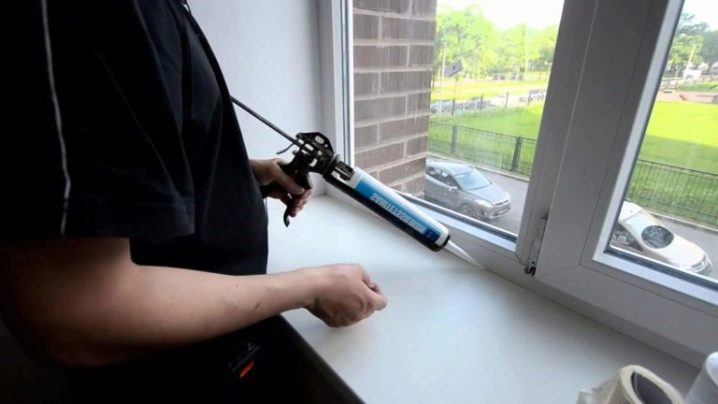
Drying time
The time required for complete drying of each sealant is different, it all depends on the composition and on the thickness of the applied layer. Practice shows that specimens on a natural basis such as bitumen dry out more slowly than artificial composites, which already include a polymer accelerator, which affects the speed of hardening.
For most sealants, initial solidification occurs within 20-30 minutes.but this is a deceiving effect. The formation of a solid film does not yet indicate complete shrinkage of the material, and if the next layer is immediately applied on top, then as a result, the entire mass of the seam under the influence of the environment will simply lag behind the glued surface after a couple of days.
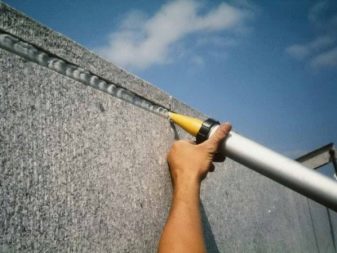

In an amicable way, you need to give each separate layer to dry for at least a day, then the entire gasket will serve for a long time. If time is catastrophically short, then primers or accelerators are additionally sold to certain types of silicone and acrylic sealants, which help the material to harden much faster.
Usage
It is not difficult to use the sealant, it does not require special professional training.
It is enough to adhere to a certain algorithm for its application to any surface.
- Before opening the container, make the room ventilated, wear protective gloves and a mask.
- The surface on which the sealant will be applied must be wiped, cleaned from previous paint and varnish layers and degreased. If you cannot completely remove all unnecessary things, you can first prime the coating with a special compound. It is better to seal the neighboring elements with masking tape and oilcloth so that the sealant does not stain too much.

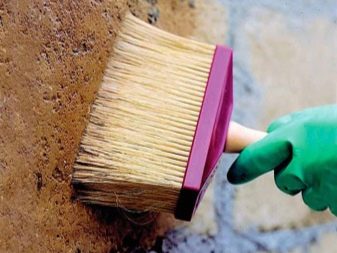
- For small work indoors, it is recommended to load the sealant into the assembly gun, and squeeze out the compound at an angle in thin strips to the place of the intended seam. If two moving elements are glued together, then you can mechanically flatten them to each other and hold for a minute or two in this position.
- Excess sealant can be removed with a spatula or white spirit until the compound is dry. After it hardens, unnecessary residues are either cut off with a special knife, or they acquire a solvent for a specific type of sealant.
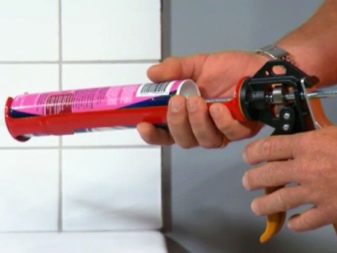
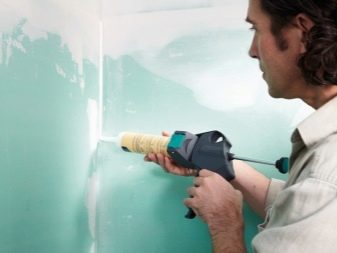
Advantages and disadvantages
All sealants, regardless of their chemical composition, have the same set of advantages:
- adhesion or the ability to grow together with many materials;
- water resistance, heat resistance and resistance to aggressive environmental influences, including corrosive chemical elements;
- some types of sealants differ in their constituent substances - fungicides, which have an antifungal effect;
- high elasticity coupled with strength, which allows it to withstand vibrations, mechanical shocks and temperature changes, while not cracking.
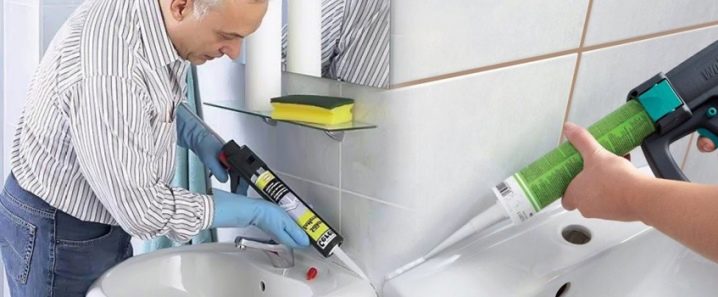
Of the few disadvantages, the following can be distinguished:
- pungent odor and the presence of toxic substances in the composition of certain types of sealants;
- a sufficiently long period of drying of each layer.
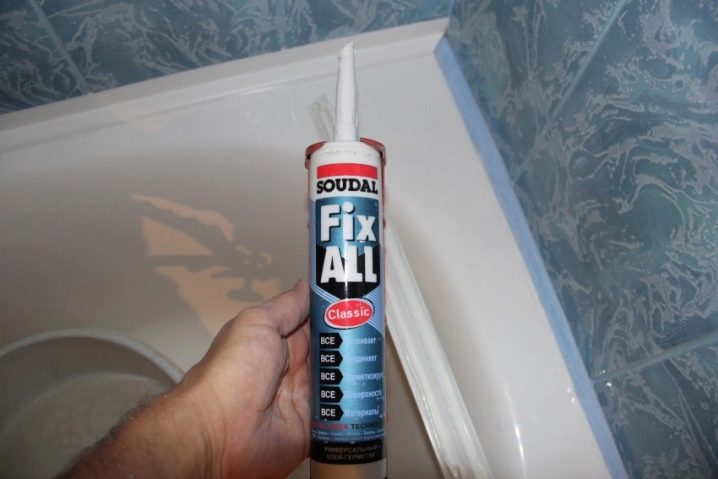
Manufacturers
The most popular manufacturers of sealants are rightfully considered Moment and Soudal... They have a wide range of materials for small household repairs, and they are affordable for a middle-class buyer. According to reviews, these compositions resemble quick-drying polyurethane foam, but much more resistant to moisture and ultraviolet light.


Sealants brands "Catch No. 3" are good for the bathroom, as they quickly harden and do not form bubbles on the surface. The composition called "Titanium" also fully corresponds to its name - it is heat-resistant and strong, but as a disadvantage - its excess is difficult to remove from the surface within 15 minutes after application.
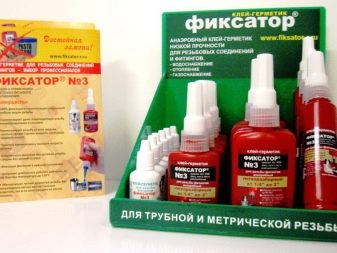
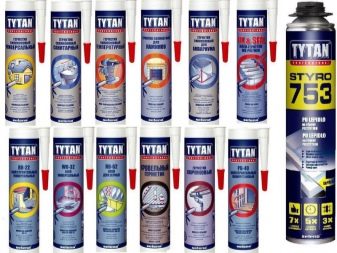
Penosil as a sealant it has very good hydrophobic properties, elasticity, and is compatible with almost any surface. Its only drawback is the rather high price.

Tips & Tricks
One-component silicone sealants can form an environment of different composition, where one or another element is released, and each name should be treated differently.
- The environment is often acidic as the sealant contains acetic acid concentrate. It has a characteristic pungent odor that disappears completely within 24 hours. But in any case, it is recommended to be careful, as its vapors in some people can cause allergies with symptoms such as dizziness and nausea.
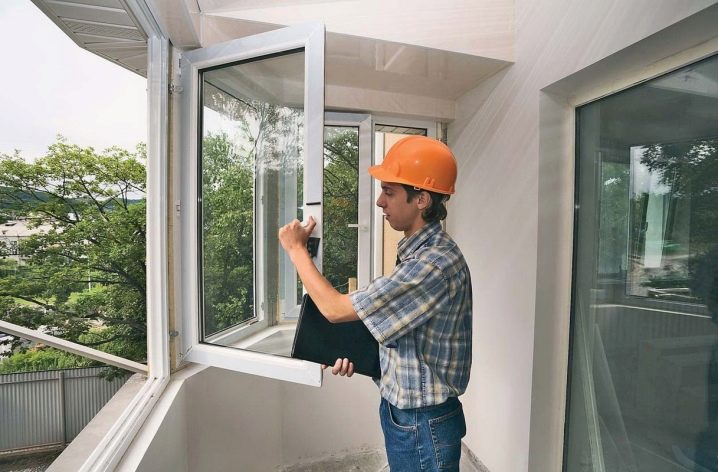
- An acidic sealant should not be used on metal surfaces, as they will simply oxidize and corrode. It is also not suitable for cementitious substrates, aluminum and even marble. And in principle, before applying it to any surface, it is better to first conduct an express test on a small area, because there could be previous uncleaned layers, which then react with acid. A distinctive feature of the acid sealant is the marking in the form of the letter "A" on the packages and the low price, which is why it is so popular.
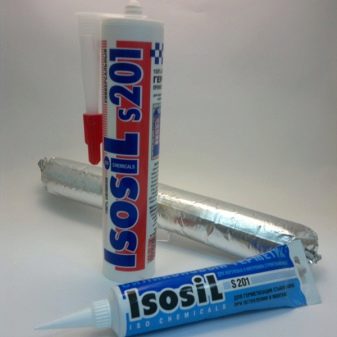
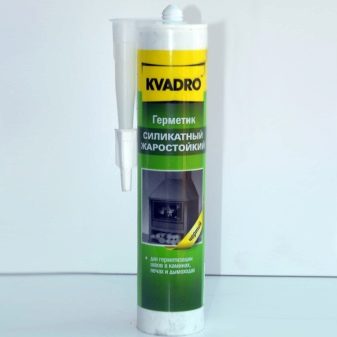
- The most versatile and quick-setting medium for silicone sealants is considered to be neutral. It is created on an alcohol or amide base, therefore it does not have a pungent odor. The price of this sealant is higher, but it can be applied to any surface. Such a heat-resistant composition can withstand temperatures up to 300 ° C, therefore it is convenient for the restoration of radiators and pipes for heating, as well as repairs in the bathroom or in the kitchen - places with high humidity. If the owner is not sure of his professionalism, it is better to choose this composition, since there are no problems with it, even with inept application.

- The sanitary silicone composition is especially distinguished, which includes the most substances - fungicides with a high level of antibacterial protection. This sealant can be used in the construction of a bath or sauna, as well as for repairs in a children's room or hospital, where sterile cleanliness is so important.
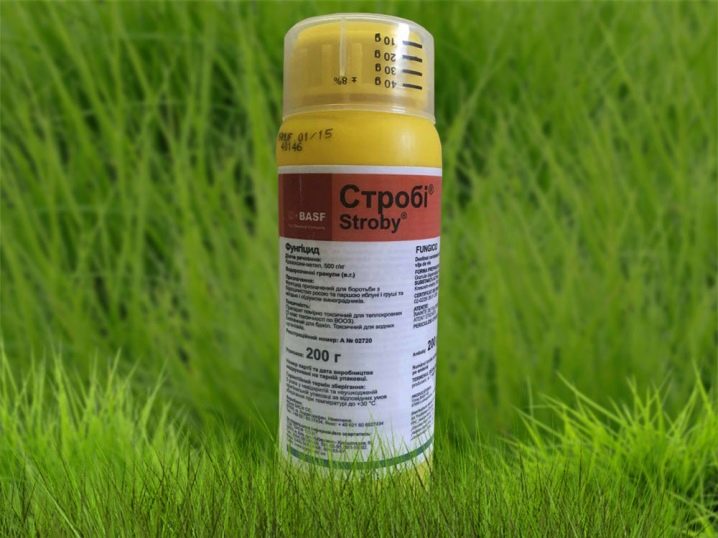
For information on how to choose a glue-sealant, see the next video.













The comment was sent successfully.